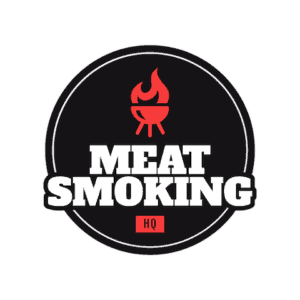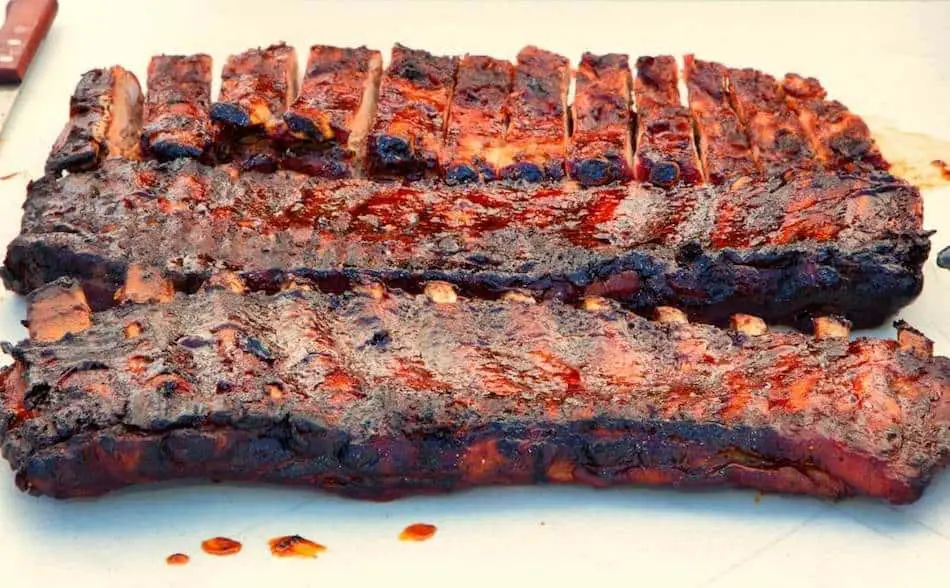
Wrapping ribs while smoking is common practice, but is it absolutely necessary? And what happens if you don’t wrap your ribs? Will they still turn out good? I wanted to find out the answer to all these questions, so I turned to the barbecue gurus to find out.
Unwrapped ribs will absorb more smoke flavor than wrapped ribs, but be aware that too much smoke can make the meat taste bitter. Good wood choices for smoking unwrapped ribs include hickory, oak, and pecan. Cooking time for ribs in a smoker can range from 5-7 hours depending on the size of the meat and the temperature. Ribs are done when the internal temperature reaches 190-205°F and pass a tenderness test. Wrapping ribs while smoking is optional and is not necessary for the average person. Wrapping can help prevent drying out of the
Quick Tips
- Unwrapped ribs will be smokier than wrapped ribs but too much smoke can make the meat taste bitter.
- Good wood choices for unwrapped ribs include hickory, oak, and pecan.
- Cooking time for ribs in a smoker can range from 5-7 hours depending on the size of the meat and temperature.
- Ribs are done when the internal temperature reaches 190-205°F and pass a tenderness test.
- Wrapping ribs while smoking is optional and not necessary for the average person, but can help prevent drying out of the meat.
- When smoking unwrapped ribs, keep the temperature of the smoker in the 225°F range to keep the ribs moist and tender.
Naked Smoked Ribs (Unwrapped)

Pork ribs cooked low-and-slow in a smoker. Smoked 'naked', without wrapping, these ribs have extra smoke flavor and an crispy bark.
Ingredients
- 1 rack of pork spare ribs (you can use the same method for baby back ribs)
- Barbecue sauce.
- Paprika – ½ Cup
- Salt – ½ Cup
- Brown Sugar – ½ Cup
- Garlic Powder – ½ Cup
- Onion Powder – ¼ Cup
- Chilli Powder – ¼ Cup
- Cumin – ¼ Cup
- Black Pepper – 2 Tablespoons
Instructions
How To Smoke Ribs Unwrapped
1. Trim the ribs and remove the membrane. To remove the membrane, make an incision, then take your finger and pull. Also, trim any excess fat from the ribs.
2. Combine the rub ingredients, or use a pre-made and add a thick layer on both sides.
3. Let the rub sit for 30-minutes to 1 hour. Allow time for the rub to draw moisture out.
4. Light your smoker. Bring the temperature to 225°F.
5. Throw on your favorite wood. Hickory, apple, cherry or pecan work well with pork ribs, or mix-and-match wood combinations.
6. Place the ribs in the smoker meat side up.
7. Spritz the ribs every hour
8. Allow 5 to 7 hours to cook the ribs to perfect tenderness.
9. Perform a tenderness test by using the bend test or toothpick test.
10 . In the last 20 minutes of the cook, remove the ribs from the smoker. Baste the ribs with barbecue sauce and put back in the smoker for 20 minutes until the glaze sets.
11. Remove and let rest for 5 minutes.
Nutrition Information:
Serving Size:
240 gramsAmount Per Serving: Calories: 762
Can You Smoke Ribs Without Wrapping?
If you’ve watched pitmasters of YouTube, you’ve probably noticed that almost all of them wrap ribs. I think the popularity of wrapping ribs links back to pitmasters who compete in barbecue competitions. In barbecue contests, competitors are doing everything they can to get the edge over an opponent and impress the judges. Then somehow, wrapping became common practice. For the average person who wants to smoke some ribs in their backyard—it’s not as important. But that’s not to say there’s no benefit to wrapping ribs in foil, and I would probably recommend it.
Unwrapped Ribs May Dry Out
The enormous advantage of wrapping ribs is it makes it harder to dry them out. If you’ve got good control over your smoker, keep the temperature low, and spritz the ribs regularly, then you shouldn’t dry out the ribs. However, wrapping is still the safest way to ensure your ribs remain moist. Whenever you have meat in a smoker for 5 to 7 hours, moisture loss is a tremendous risk. Wrapping is a good way to protect the meat from overexposure to heat, and hold in moisture.
What Temperature Do You Smoke Unwrapped Ribs?
When smoking ribs unwrapped, it’s important to keep the temperature of your smoker in the 225°F range. This low temperature will help keep the ribs moist, smokey and tender. When ribs are wrapped, they can handle higher temperatures. However, when you’re smoking naked ribs, hold your smoker at 225°F.
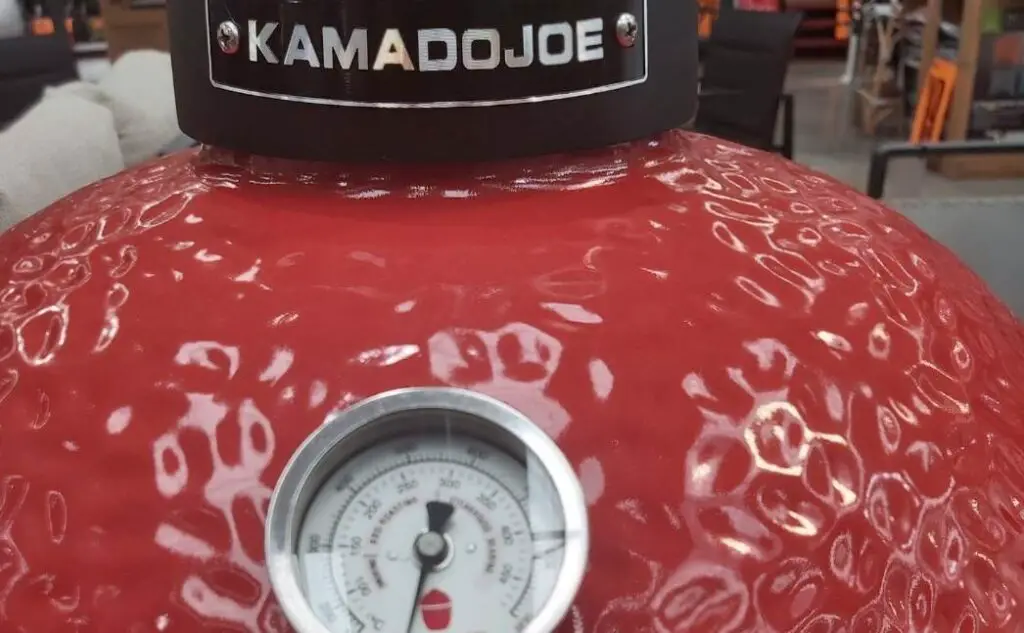
The Best Wood For Smoking Ribs Unwrapped
When smoking ribs unwrapped, be careful not to over smoke the ribs. Unwrapped ribs won’t have the same level of protection against prolonged exposure to strong smoke. This makes wood choice all the more important.
Once you’ve added a few chunks of wood to the fire, don’t add more. It’s very easy to over smoke ribs when they’re not wrapped. Keep the smoke rolling for the first half of the cook, then ease off in the last few hours.
I’d be very careful using mesquite when smoking no wrap ribs. Hickory and ribs are a match made in Heaven, however, even too much hickory could make the ribs bitter when cooked uncovered.
If you’re worried about over smoking the ribs, mix in some mild wood like apple or cherry. Pecan is a safe choice, so too is maple or oak. The best wood for smoking ribs unwrapped is hickory mixed with a mild fruit wood such as apple or cherry. However, wood choice is a personal preference. As always, experiment with different combinations.
Does Wrapping Tenderize The Ribs?
Wrapping your ribs will also make them more tender and juicy. Wrapping traps all the moisture inside the package, helping to tenderize the meat and keeping it nice and juicy. You can still get juicy ribs without wrapping, but you have to get everything else right, from the temperature to the barbecue techniques.
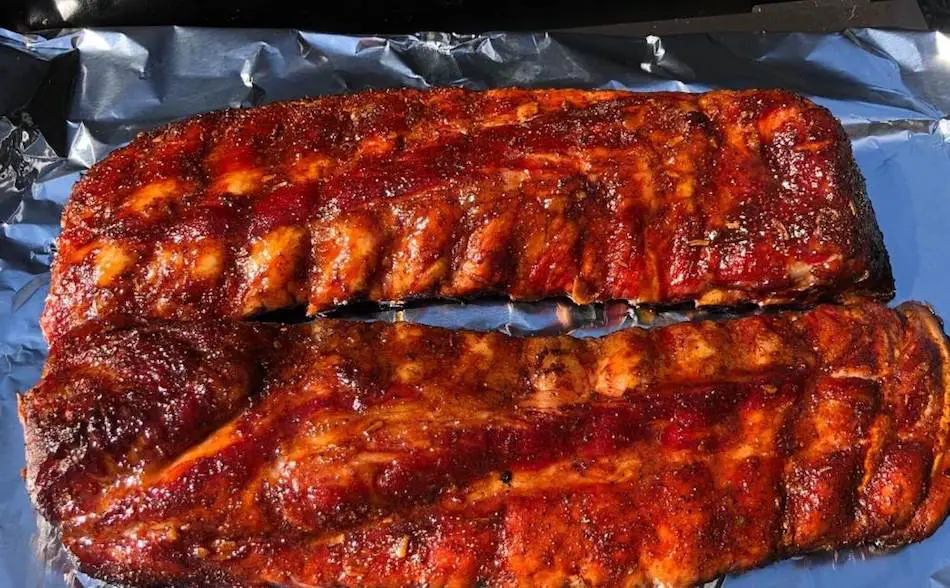
Wrapped Ribs Cook Faster
Wrapping will also take a couple of hours off the total cook time. By wrapping ribs, you will probably save about 1 hour. This is because moisture evaporates on the surface of the meat, which cools it down and slows the cook. So wrapping prevents this from happening.
Wrapping Ribs Beat The Stall
The stall is the most dreaded word in barbecue. It will make dinner late and will have you kicking your smoker. The good thing about wrapping is it will help your ribs push through the stall. The stall occurs when the meat sweat. The moisture cools the meat and can slow the cook for 1 or 2 hours.
Unwrapped Ribs Produce A Crunchy Bark
The best feature or the unwrapped ribs is the crispy bark. The downside of wrapping is it makes the bar During the first few hours of the cook, your ribs will have developed a nice firm bark. Once you wrap the ribs, that bark will soften. If you leave the ribs in foil for too long, your bark will go mushy.
If the bark has gone soft because of wrapping, you can put the ribs back onto the grill after you’ve unwrapped the ribs. It doesn’t take long. All you need is a few minutes on each side to dry out the meat.
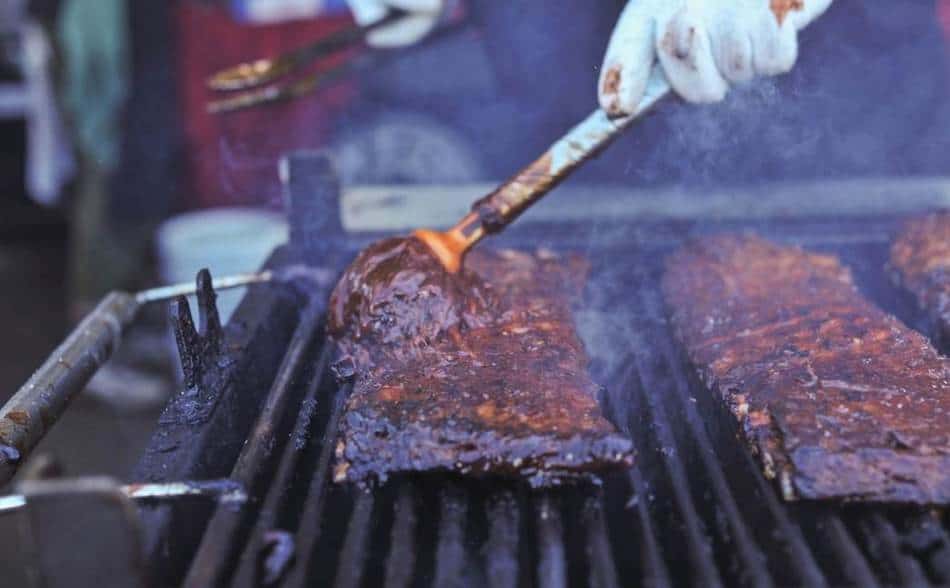
Unwrapped Ribs Are Smokier
Wrapped ribs will not be as smoky as unwrapped ribs. When you leave the ribs unwrapped for the entire cook, they will absorb more smoke flavor. However, sometimes too much smoke is not a good thing and can make your meat taste bitter, especially if you are using hickory or mesquite.
Wood choice is important if you’re smoking the ribs unwrapped. Mesquite isn’t for everybody and the flavor can overpower your meat. Hickory, oak and pecan are all great choices for ribs. You can’t go wrong with either.
How Long Do You Cook Ribs In A Smoker?
It can take anywhere from 5 to 7 hours to cook ribs depending on the size of the meat and the temperature you are cooking. Baby backs usually only take about 4 or 5 hours because they are much leaner whereas spare ribs contain more fat, and they are larger, so will therefore take longer. Obviously, if you are cooking at 225° F, it will take longer than it would if you smoked at 275 F. This is the ideal temperature range, and I don’t recommend going outside of this temperature range.
When Are Ribs Done?
Ribs are done once the internal temperature reaches around about 190° F and 205° F. Perform a tenderness test by poking the ribs with a toothpick. The meat should feel like poking butter once it reaches perfect tenderness. Test different parts of the rib rack, checking the thicker parts and the thinner parts. Another test you can perform is twisting the bone. If the bone comes out, then you have overcooked the ribs. You want it so that it almost comes off, but not quite. The other common test is the bend test. Bend the wreck of ribs, and if you see the meat cracking, that means it is done. The meat is still stretchy, then it is not tender enough. The USDA says it’s safe to eat ribs at 145° F, but even though it is safe to eat at this temperature, the meat will not be tender and juicy. As with brisket, ribs are best cooked until an internal temperature of around about 200° F to reach optimal tenderness.
When Do You Wrap Ribs?
The best time to wrap ribs is about 2 hours into the cook when the ribs have turned a nice mahogany color. After a few hours, the bark should also have set and the rub should no longer stick to your finger when you touch it. The internal temperature will probably be around 150° F.
How To Wrap Ribs
- Wrap the ribs in two layers of heavy duty aluminium foil.
- Be careful that none of the bones poke out and rip the foil. You don’t want any leaks because moisture will escape, and so will the heat.
- Neatly fold the foil so the ribs are easily accessible. At different stages of the cook, you will need to open the ribs to test for tenderness, apply sauce, etc. So don’t scrunch the foil.
- At the saucing stage, make a foil boat and sit the ribs on top. Baste the ribs and let them sit until the sauce can set.
What To Wrap Ribs In? Foil or Butcher Paper?
Foil is the most common wrapping for ribs. There isn’t a great deal of difference between butcher paper and wrapping with ribs. The difference seems to be more noticeable when smoking brisket. Butcher paper has become a popular trend in barbecue, especially for briskets, and you can use it with ribs. Butcher paper preserves the bark of the meat, because it allows the brisket or ribs to breathe.
I’ve seen pitmasters like Aaron Franklin smoke ribs, and he used foil. Pitmasters such as Malcolm Reed use foil. BBQ Guru meathead Goldwyn doesn’t believe you need to wrap ribs if you are just smoking in the backyard because the difference is minimal. However, meathead believes in competitions where you need the winning edge, wrapping is only necessary in those circumstances.
Is The 3-2-1 Method Any Good For Ribs?
The 3-2-1 method is a common technique but isn’t really used by barbecue professionals. You will find most barbecue gurus go more by look and feel rather than following any sort of rigid time structure.
The 3-2-1 method involves smoking the ribs for 3 hours unwrapped, allowing time for the ribs to absorb smoke and develop a bark. After 3 hours, you then take the ribs and wrap them in aluminium foil and then return them to the smoker. After 2 hours, you remove the ribs and baste in a barbecue sauce. The final stage, for 1 hour the ribs go on the grill basted with a barbecue sauce. If at any point you feel the ribs are done, remove them from the smoker. The 3-2-1 method is only a guide.
What About The 2-2-1 Method?
The 2-2-1 method involves smoking the ribs for 2 hours unwrapped, then, 2 hours in foil, and then 1 hour unwrapped while being basted with sauce. This method is closer to what barbecue gurus do when smoking ribs. If you watch Malcolm Reed or Aaron Franklin, you will notice they use a similar timeframe, although they don’t follow a rigid formula.
Experiment With Different Techniques
As with anything, experiment. Smoke two racks of ribs, one wrapped and one unwrapped, and see how they turn out. Do a blind test and eat them and see if you can tell the difference. Prepare them exactly the same way except wrap one and leave one unwrapped. You’ll find that the wrapped ribs will cook faster and we’ll have a different texture. You will also notice a minor difference in the taste. The unwrapped ribs will probably taste smokier and have a crispier bark but may taste a little dry. The wrapped ribs may be moist, have a mushy bark. Either way, smoke ribs will taste awesome if you keep the temperature within the correct range and prepare the meat the right way. The difference between wrapping and unwrapping will probably be almost unnoticeable.
My Favorite Meat Smoking Tools
Thanks for checking out this article. I hope you learned a few things. Here are some of my favorite tools I use when smoking brisket that may be useful to you. These are affiliate links, so if you decide to purchase any of these products, I’ll earn a commission. But in all honesty, these are the tools I recommend to my family and friends who are just starting out.
Meat Thermometer: There are dozens of fancy thermometers on the market, but I still use my trusty TP20. For around $50, I have a high-quality meat thermometer with two probes, and can track the temperature of my smoker with one probe, and my meat with the other probe. The ThermoPro TP20 is an Amazon Best Seller because it’s the easiest thermometer to operate, is durable, highly accurate, and comes with pre-programmed meat settings.
Instant Read Thermometer: Arguably, the second most important tool you need is a fast and accurate instant-read thermometer. These tools play an important role in the latter stages of the cook when the meat needs regular checking in multiple areas. I use the ThermoPro TP19 because it can do everything a ThermaPen can do, but for a fraction of the cost. You can check out the TP19 on Amazon here.
Wireless Thermometer: The latest thermometers on the market have no wires and can be controlled by wi-fi via your phone. Airprobe 3 is the best of this technology.
Butcher Paper: Wrapping brisket in butcher paper has become a huge trend in barbeque thanks to Aaron Franklin. Wrapping your brisket in paper will give you a nice brisket bark. However, you can’t just use any old paper, it has to be unwaxed, food grade paper. You can find it on Amazon here.
Advanced Thermometer and Automatic Temperature Controller: Once you’re ready to take things seriously, the FireBoard 2 Drive is a six-channel Bluetooth/Wi-Fi thermometer that can monitor up to 6 pieces of meat, control and graph your cook sessions on your smartphone, and attaches to an an automatic blower that will convert your charcoal smoker to a set-and-forget. This is one of the most advanced meat thermometers on the market. You can check it out on the FireBoard website here.
